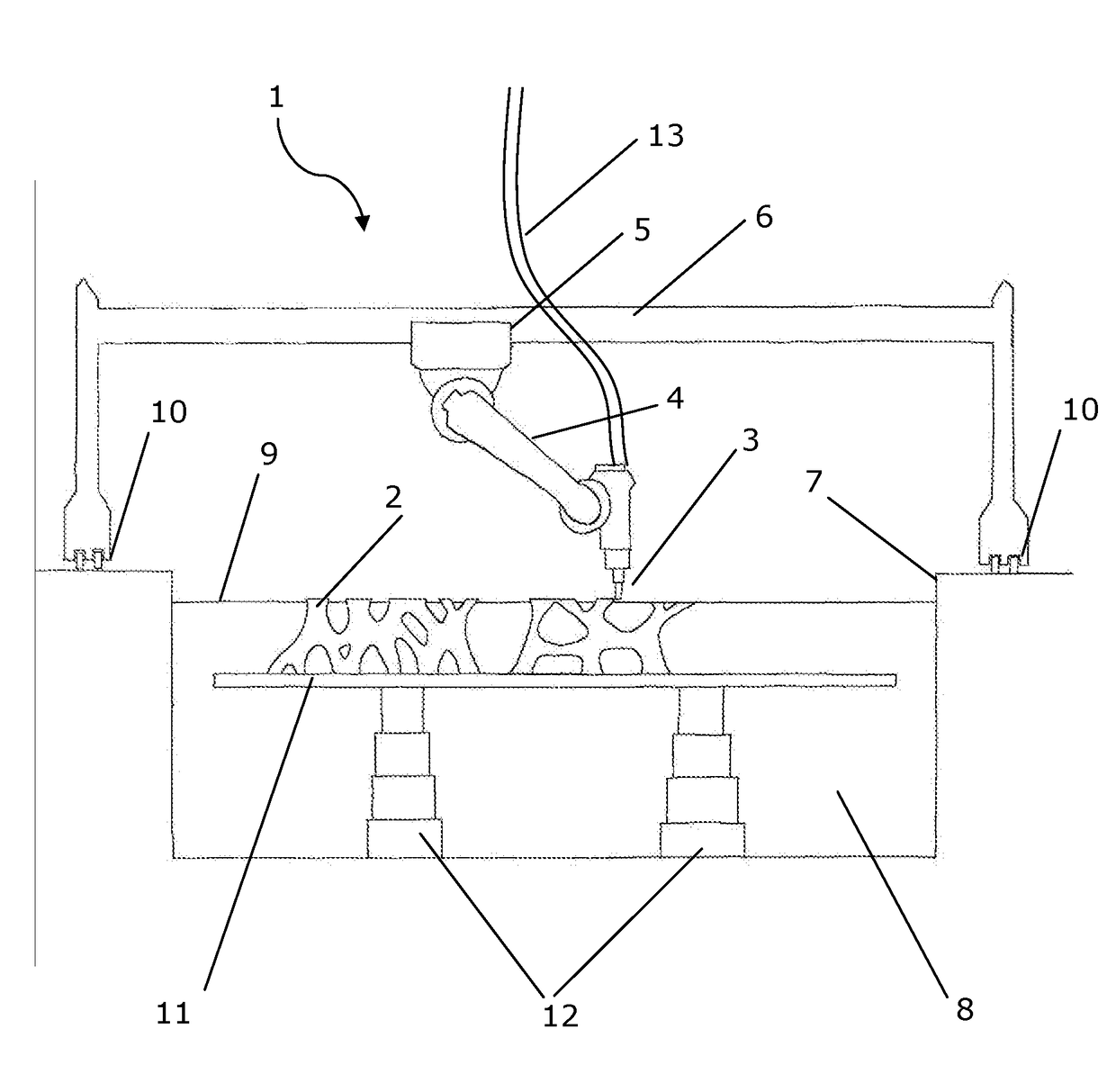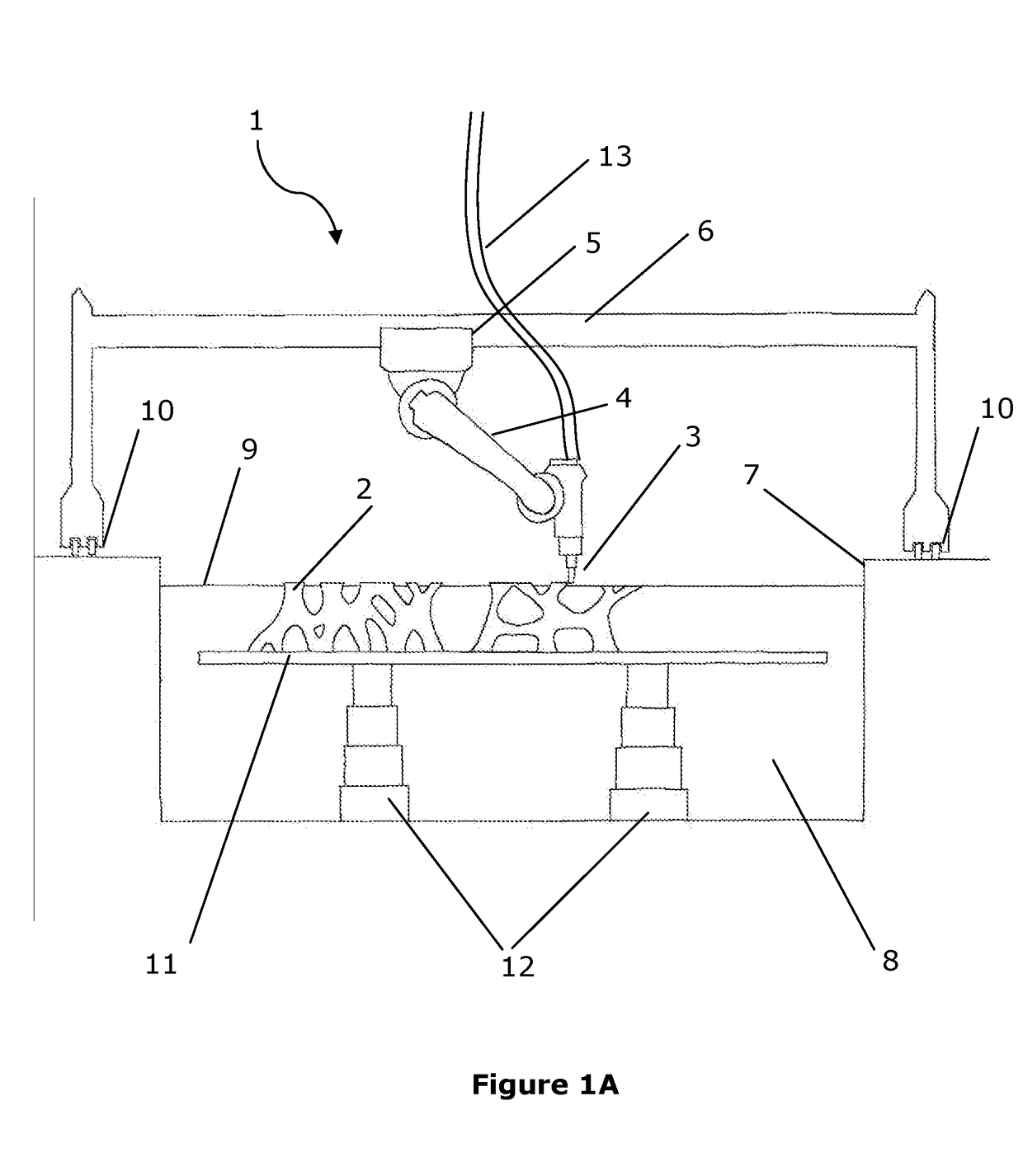Apparatus for Fabricating an Object
- Summary
- Abstract
- Description
- Claims
- Application Information
AI Technical Summary
Benefits of technology
Problems solved by technology
Method used
Image
Examples
Embodiment Construction
[0027]The present disclosure relates generally to methods and apparatus for fabricating an object using a computer-controlled apparatus, responsive to computer instructions relating to the object geometry. In particular, the disclosure relates to a computer-controlled apparatus for fabricating an object which includes a deposition head in communication with a supply of first material and adapted to expel the first material therefrom, a reservoir which is at least partially filled with a fluid-like second material, and a controller configured to selectively move at least one of the deposition head and at least a portion of the reservoir relative to each other, and selectively operate the deposition head, in order to deposit the first material in specific locations to form an object which corresponds with the object geometry, whereby at least a portion of the object is submerged in the second material.
[0028]The disclosed apparatus and method is useful when fabricating an object which ...
PUM
| Property | Measurement | Unit |
|---|---|---|
| Flow rate | aaaaa | aaaaa |
| Responsivity | aaaaa | aaaaa |
Abstract
Description
Claims
Application Information
 Login to View More
Login to View More - R&D
- Intellectual Property
- Life Sciences
- Materials
- Tech Scout
- Unparalleled Data Quality
- Higher Quality Content
- 60% Fewer Hallucinations
Browse by: Latest US Patents, China's latest patents, Technical Efficacy Thesaurus, Application Domain, Technology Topic, Popular Technical Reports.
© 2025 PatSnap. All rights reserved.Legal|Privacy policy|Modern Slavery Act Transparency Statement|Sitemap|About US| Contact US: help@patsnap.com



